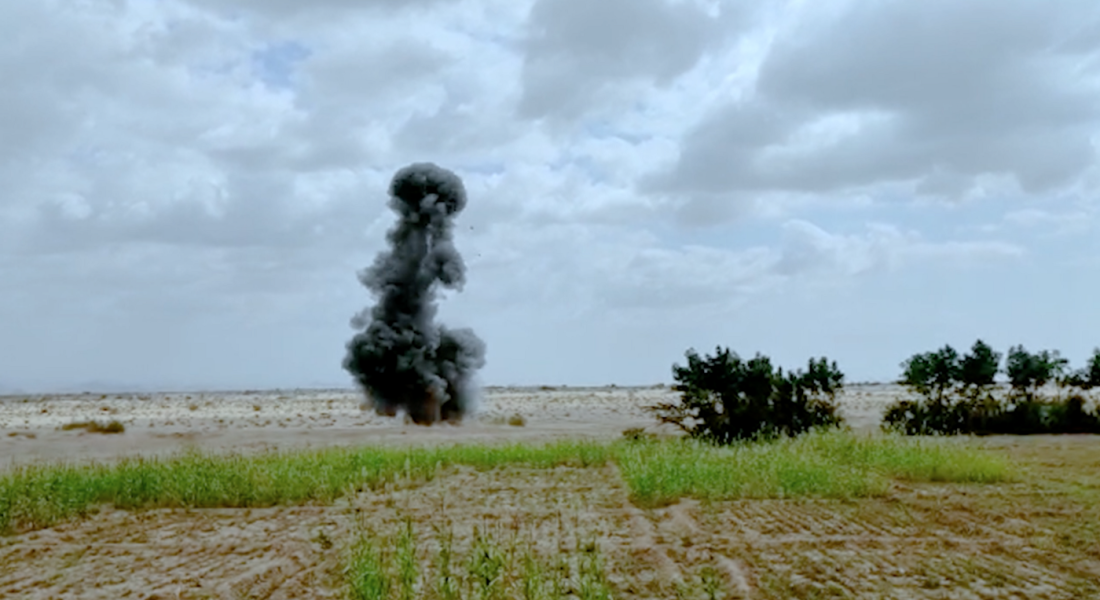As the world observes the International Day for Preventing the Exploitation of the Environment in War and Armed Conflict on 6 November, Project Masam draws attention to one of the least recognised victims of war: the environment itself.
From poisoned soil to shattered ecosystems and unsafe water supplies, the hidden legacy of landmines and explosive remnants of war (ERW) continues to scar the landscapes of Yemen, threatening not only lives and livelihoods, but the very natural systems upon which communities depend.
According to the International Committee of the Red Cross, weapon contamination can have “long-term effects on the environment, affecting biodiversity and disrupting ecosystems.” Indeed, explosives and metal fragments seep toxins into soil and groundwater, while large areas of land become inaccessible to farming, grazing and wildlife. The Geneva International Centre for Humanitarian Demining, meanwhile, notes that landmines and ERW often lead to overexploitation of whatever land remains usable, accelerating soil degradation and biodiversity loss.
Nowhere is this crisis more visible than in Yemen, where ten years of conflict have littered vast areas with hidden explosives. The contamination is not confined to battlefields: mines and unexploded ordnance have been found in farmland, near wells, in streams, and around community centres. These devices block access to water, prevent cultivation, and endanger both people and wildlife.
According to Yemeni Minister of Water and Environment Tawfiq Al-Sharjabi, Houthi-laid landmines have “transformed farmland, villages, and natural areas into toxic, inaccessible wastelands, destroying crops, blocking irrigation, and degrading ecosystems”.
Since its launch in 2018, Project Masam has worked to reverse this destruction. To date, the project’s demining teams have located and destroyed more than 521,700 explosive devices across Yemen’s liberated areas, including almost 7,000 anti-personnel mines, over 147,800 anti-tank mines, over 8,300 imporvised explosive devices (IEDs) and nearly 354,000 items of unexploded ordnance. More than 72.4 million square metres of land have been rendered safe for families, farmers and animals alike.
The project’s very name carries symbolic meaning. In Arabic, “Masam” means “pore”, in a reference to the tiny openings through which the land breathes. By clearing mines and explosive remnants, Project Masam quite literally allows Yemen’s soil to breathe again, restoring the possibility of growth, renewal and life.
Ousama Algosaibi, Managing Director of Project Masam, said the environmental stakes of demining are as critical as the humanitarian ones. He explained: “When we clear a minefield, we are saving lives, but we are also giving the land itself a chance to breathe again. Every square metre we make safe is a step toward restoring Yemen’s soil, water and biodiversity. Demining is environmental work as much as it is humanitarian work, because without safe land, there can be no sustainable recovery.”
The environmental impacts of explosive contamination ripple far beyond the blast sites. Mines left in agricultural zones prevent farmers from planting or irrigating their fields. Wells and water channels blocked by explosives cut communities off from drinking water and irrigation. Heavy metals and explosive residues leach into groundwater, threatening human and animal health.
Abandoned or inaccessible land becomes overgrown, eroded or invaded by non-native species. Wildlife avoids mined areas, and livestock losses mount as animals wander into danger zones.
In Yemen – a country already facing severe drought, soil degradation and food insecurity – the presence of landmines magnifies these pressures. Fertile land that could help communities rebuild remains locked behind invisible walls of danger. When farmers cannot cultivate or access water, food insecurity deepens. When vegetation and wildlife are lost, ecosystems lose their resilience to climate change and natural disasters.
Recent research from other conflict zones underscores the scale of environmental contamination left behind by war. In Mosul, Iraq, scientists found that heavy metal levels in conflict-affected soils were far above global averages, with lead, cadmium, and chromium reaching concentrations that classified several sites as “heavily polluted.”
Elsewhere, in Ukraine, soil samples taken from active war zones showed concentrations of lead, cadmium and copper up to 25 times higher than background levels, and in some cases more than a hundredfold increase. These findings confirm what deminers in Yemen see every day: that the damage done to the environment by explosive ordnance can persist for decades unless cleared and remediated.
Project Masam’s life-saving clearance work is also an environmental one. Each device removed opens the door to replanting, soil restoration and the return of wildlife. As cleared land is restored to safe use, communities are once again able to grow crops, tend livestock and manage water systems: rebuilding both livelihoods and landscapes.
Algosaibi emphasised that the world must view demining through a broader lens. “Environmental recovery and human recovery go hand in hand. Clearing explosive remnants is the first step toward restoring food security, protecting water sources and allowing nature to heal. On this International Day, we renew our commitment to freeing Yemen’s land for people, for wildlife, and for the generations to come.”
As the United Nations reminds us each 6 November, the environment is too often a silent casualty of war. For Yemen, and for countless countries recovering from conflict, the work of deminers is vital for safety, and for sustainability.

